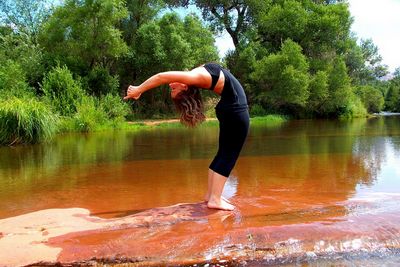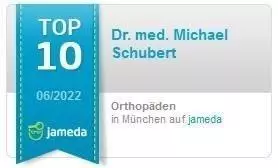Relief from an acute herniated disc – exercises to do at home
A herniated disc - the technical term is prolapse (prolapsus nuclei pulposi) - is a condition where one of the discs that cushion your vertebrae slips out of position. This can happen from a sudden injury or over time as a result of wear and tear on the spine. A herniated disc can be very painful and cause other symptoms as well.
Intervertebral discs consist of a hard outer layer of cartilage and a softer inner layer of gel. The gel gives the intervertebral disc its cushioning properties. A herniated disc means that the inner layer of gel has leaked out through a tear in the outer layer. This can happen suddenly, through injury, or over time as the disc degenerates, wears out, and wears out.
A herniated disc can be very painful. If it presses on a nerve, you may also experience symptoms such as numbness, tingling, or weakness. In some cases, a prolapse can also lead to problems with bowel or bladder function.
If you have a herniated disc, your doctor will likely recommend conservative treatment options first. These may include rest, ice, heat, physical therapy, and over-the-counter pain relievers. If these treatments don't help, you may need surgery to repair the disc.
A herniated disc can be a very painful condition. However, with the right treatment, most people are able to find relief and return to their normal activities.
How do you recognize a herniated disc?
There are several ways to identify a herniated disc. One of the most common ways is through pain. A herniated disc can cause severe back and/or leg pain. This is because the disc is pressing on your nerves. Another way to detect a herniated disc is through an MRI or CT scan. These scans can show that the disc has slipped.
If you think you have a herniated disc, you should definitely see a doctor, preferably a spine specialist. He can confirm the diagnosis and, above all, identify exactly what type of herniated disc it is, what the cause is, and conclude what the likely best and most gentle treatment option is.
Immediate surgery is rarely recommended
There are a few reasons why immediate surgery is not the best treatment for most herniated discs. First, the disc may not cause any symptoms at all and may not require treatment. Second, even if the disc is causing symptoms, there are often other options that can be tried first, such as pain medication, physical therapy, or epidural steroid injections.
Surgery should only be considered when these other options fail. However, one should not rely on the diagnosis from the Internet. This is definitely a matter for specialists. The internationally recognized experts at the Apex-Spine Spine Center have over 20 years of experience with disc problems, acute herniated discs and operations on the spine.
They also have the necessary equipment to provide a truly comprehensive, thorough diagnosis, which is essential in order to select the right treatment method. Many patients are surprised that in most cases surgery is not the best choice. Sometimes even targeted exercises at home can help.
By keeping the muscles around the spine strong, you can help support the spine and take some of the pressure off the discs. This can help reduce pain and improve your overall mobility.
Of course, it's important to consult your doctor before beginning any exercise program, especially if you have a herniated disc. He can tell you which exercises are safe for you and which ones to avoid. Once your doctor has given you the go-ahead, you should start slowly and gradually increase the intensity of your exercise as you are able. Make sure to listen to your body and stop if you feel pain. Over time and with a little patience, you should regain your strength and mobility. Here are some exercises that have proven useful:
1. The McKenzie Method
The McKenzie Method is a great way to relieve an acute herniated disc at home. In this method, you lie on your back and pull your knees toward your chest. Then you need to extend one leg at a time and hold it for five seconds before lowering it back down. Repeat this process 10 times for each leg.
2. Spinal decompression
Spinal decompression is another effective way to relieve an acute herniated disc at home. For this exercise, lie on your back and place your hands behind your head. Then raise your legs so that they are perpendicular to the floor and hold them in this position for 30 seconds. Repeat this process three times.
3. The Superman Exercise
The Superman exercise is also a good way to relieve an acute herniated disc at home. For this exercise, lie on your stomach and lift your arms and legs off the floor. Hold this position for five seconds and then return to the starting position. Repeat this process 10 times.
4. The cobra pose
The cobra pose is a yoga pose that is very effective for relieving an acute herniated disc at home. To do this, lie on your stomach and place your hands on the floor next to your shoulders. Then lift your head and chest off the floor and hold this position for 30 seconds. Repeat this process three times.
5. The pose of the child
Child pose is another yoga pose that is great for relieving an acute herniated disc at home. To do this, sit on your heels and then lean forward so your forehead touches the floor. Then stretch your arms out in front of you and hold this position for 30 seconds. Repeat this process three times.
Try these exercises. Another important tip: you don't have to wait until you have a herniated disc to do these exercises, they are also great for prevention and maintaining mobility. That is the aim of all treatments relating to the spine, and regardless of whether exercises, conservative strengthening therapy or an operation are necessary - it is always about maintaining or restoring the quality of life.
Talk to our team of experts if you have any questions about diseases and pain of the intervertebral disc and spine. The Apex-Spine Spine Center looks forward to your inquiry.

